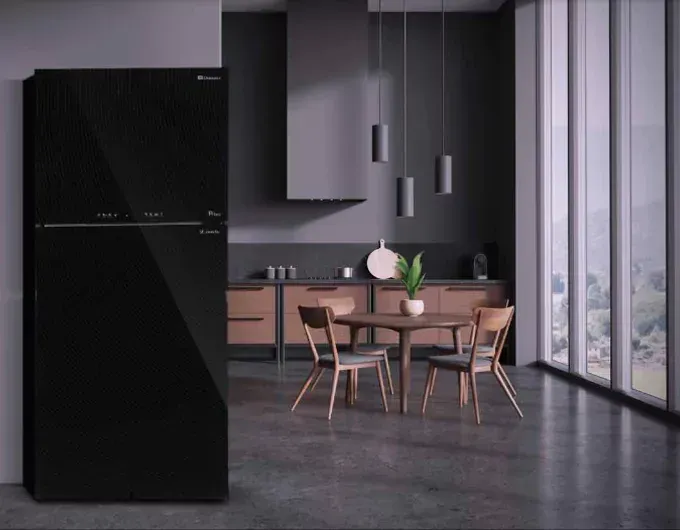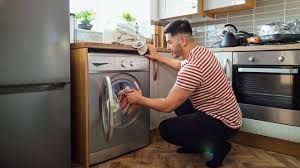How to Repair the Ice Maker in a Samsung Refrigerator?
Ice makers are a convenient feature in modern refrigerators, but they can sometimes malfunction, leaving you without a steady supply of ice. If you own a Samsung refrigerator and are experiencing issues with the ice maker, this guide will help you diagnose and repair common problems. Follow these steps to get your ice maker back in working order. From checking the power and water supply to inspecting the ice maker's components, we'll cover all the essential troubleshooting steps. With a little effort, you can often resolve these issues without needing professional help.
Understanding the Ice Maker
Before diving into repairs, it's essential to understand how the ice maker in your Samsung refrigerator works. The ice maker typically consists of the following components:
- Water Inlet Valve: Controls the flow of water into the ice maker.
- Ice Mold Thermostat: Monitors the temperature and signals when to release the ice.
- Ice Mold Heater: Warms the ice mold slightly to release the ice cubes.
- Control Module: Manages the ice-making cycle.
- Ice Ejector Arm: Pushes the ice cubes out of the mold and into the ice bin.
Common Ice Maker Problems
Ice makers are a convenient feature in modern refrigerators, but they can sometimes malfunction, leaving you without a steady supply of ice. If you own a Samsung refrigerator and are experiencing issues with the ice maker, this guide will help you diagnose and repair common problems. Follow these steps to get your ice maker back in working order. From checking the power and water supply to inspecting the ice maker's components, we'll cover all the essential troubleshooting steps. With a little effort, you can often resolve these issues without needing professional help.
- Ice Maker Not Making Ice: Ensure the ice maker is turned on and the water supply line is properly connected and not frozen.
- Ice Maker Making Small or Hollow Ice Cubes: Check for a clogged water filter or low water pressure, as both can affect the size and quality of the ice cubes.
- Ice Maker Leaking Water: Inspect the water supply line and connections for leaks. Also, ensure the ice maker is level and not overfilled.
- Ice Maker Making Noise: Unusual noises can indicate a jammed ice maker or issues with the motor. Regularly clean and inspect the ice maker to prevent noise problems.
By addressing these common refrigerator repair issues, you can keep your Samsung refrigerator's ice maker functioning smoothly.
Tools and Materials Needed
- Screwdrivers (Phillips and flathead)
- Multimeter
- Hairdryer
- Clean cloths
- Replacement parts (if necessary)
- User manual for your specific Samsung refrigerator model
Step-by-Step Repair Guide
1. Ice Maker Not Making Ice
Check the Water Supply
- Ensure the refrigerator is connected to a water supply and the water line is turned on.
- Inspect the water inlet valve for any signs of damage or blockage. If faulty, replace the valve.
Inspect the Ice Maker Assembly
- Open the freezer door and locate the ice maker.
- Check if the ice maker is turned on. There should be an "on/off" switch or a lever arm.
- Reset the ice maker by turning it off for a few minutes and then turning it back on.
Test the Water Inlet Valve
- Use a multimeter to check the water inlet valve for continuity.
- If the valve doesn't have continuity, it needs to be replaced.
Examine the Ice Maker Module
- Remove the ice maker from the freezer by unscrewing the mounting screws and disconnecting the wiring harness.
- Inspect the control module for any visible damage or burnt components. Replace if necessary.
2. Ice Maker Making Small or Hollow Ice Cubes
Check the Water Filter
- A clogged water filter can restrict water flow to the ice maker.
- Replace the water filter according to the manufacturer's instructions.
Inspect the Water Inlet Valve
- Ensure the water inlet valve is fully open and not restricted.
- Test the valve for proper function using a multimeter.
Examine the Water Pressure
- Low water pressure can cause small or hollow ice cubes.
- Check the water pressure coming into the refrigerator. It should be between 20-120 psi.
- If the water pressure is low, you may need to contact a plumber to address the issue.
3. Ice Maker Leaking Water
Check the Water Line
- Inspect the water line for any leaks or kinks. Straighten any kinks and tighten any loose connections.
- Replace any damaged sections of the water line.
Inspect the Ice Maker Assembly
- Ensure the ice maker is level. An uneven ice maker can cause water to spill.
- Adjust the leveling screws if necessary.
Examine the Fill Cup and Fill Tube
- The fill cup and fill tube direct water into the ice maker mold. If they are misaligned or damaged, water can leak.
- Realign or replace the fill cup and fill tube as needed.
4. Ice Maker Making Noise
Check for Ice Jams
- Ice jams can cause unusual noises in the ice maker.
- Open the ice maker and inspect for any ice cubes stuck in the ejector arm or other components.
- Use a hairdryer on a low setting to gently melt any ice jams.
Inspect the Ice Maker Assembly
- Listen for unusual noises coming from the motor or fan.
- If the motor or fan is faulty, it may need to be replaced.
Preventative Maintenance Tips
- Regularly Replace the Water Filter: Follow the manufacturer's guidelines for replacing the water filter to ensure proper water flow and ice quality.
- Keep the Ice Maker Clean: Regularly clean the ice maker and ice bin to prevent mold and mildew buildup.
- Inspect and Replace Worn Parts: Periodically check the ice maker components for wear and tear and replace any damaged parts promptly.
When to Call a Professional
While many ice maker issues can be resolved with DIY repairs, some problems may require professional assistance. Consider calling a professional if:
- You've followed all troubleshooting steps and the ice maker still isn't working.
- The issue involves complex electrical components.
- You are uncomfortable performing the repairs yourself.
Long-Term Performance
Repairing the ice maker in your Samsung refrigerator can be a straightforward process if you follow these steps. By diagnosing the problem accurately and using the right tools and replacement parts, you can often resolve the issue yourself and avoid the cost of professional repairs. Regular maintenance and prompt attention to any problems will ensure your ice maker continues to provide a steady supply of ice for years to come. For more detailed instructions and diagrams specific to your Samsung refrigerator model, always refer to the user manual or the manufacturer's website.
You might also like
Educational Center
Book a Service Today
We will get back to you as soon as possible
Please try again later
Quick & Reliable
We are available 24/7
About Us
Authorized Appliance is an appliance repair contractor referral service. We connect you with appliance contractor in your area. All contractors are operated independently of Authorized Appliance. It is the responsibility of each user to verify that the contractor connected with meets all licensing and insurance requirements in that jurisdiction.
All Rights Reserved - Authorized Appliance




